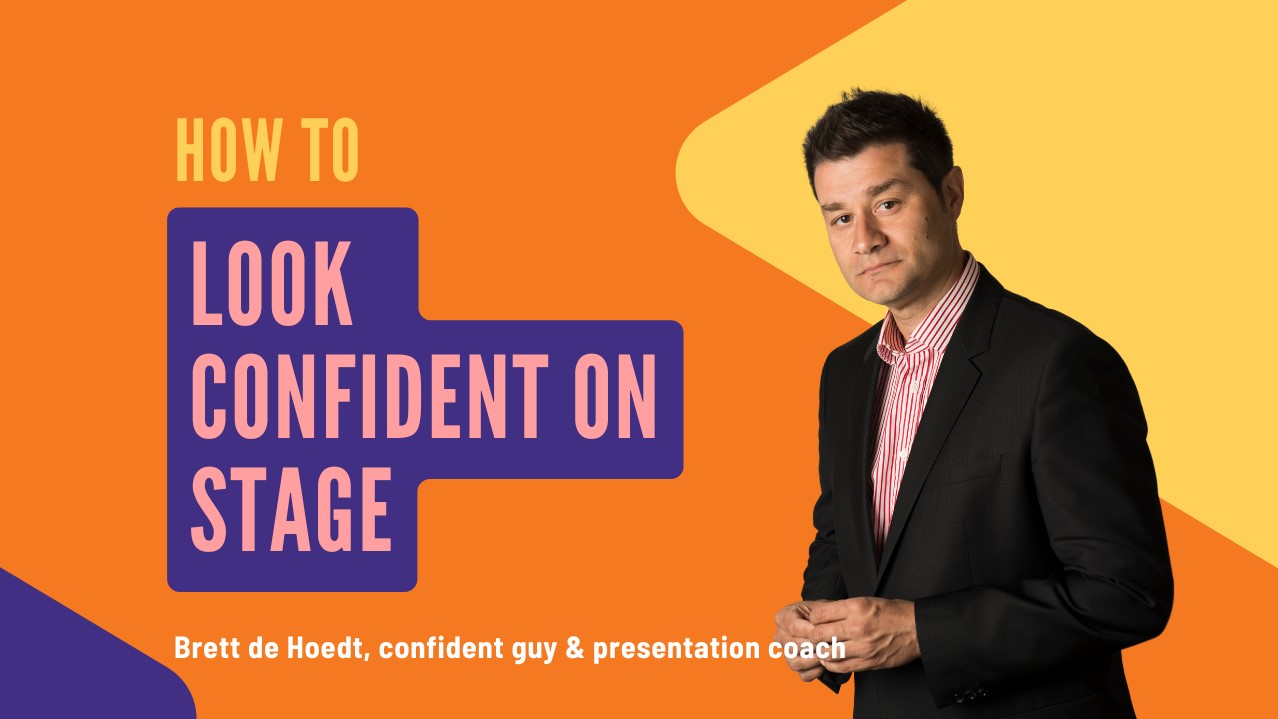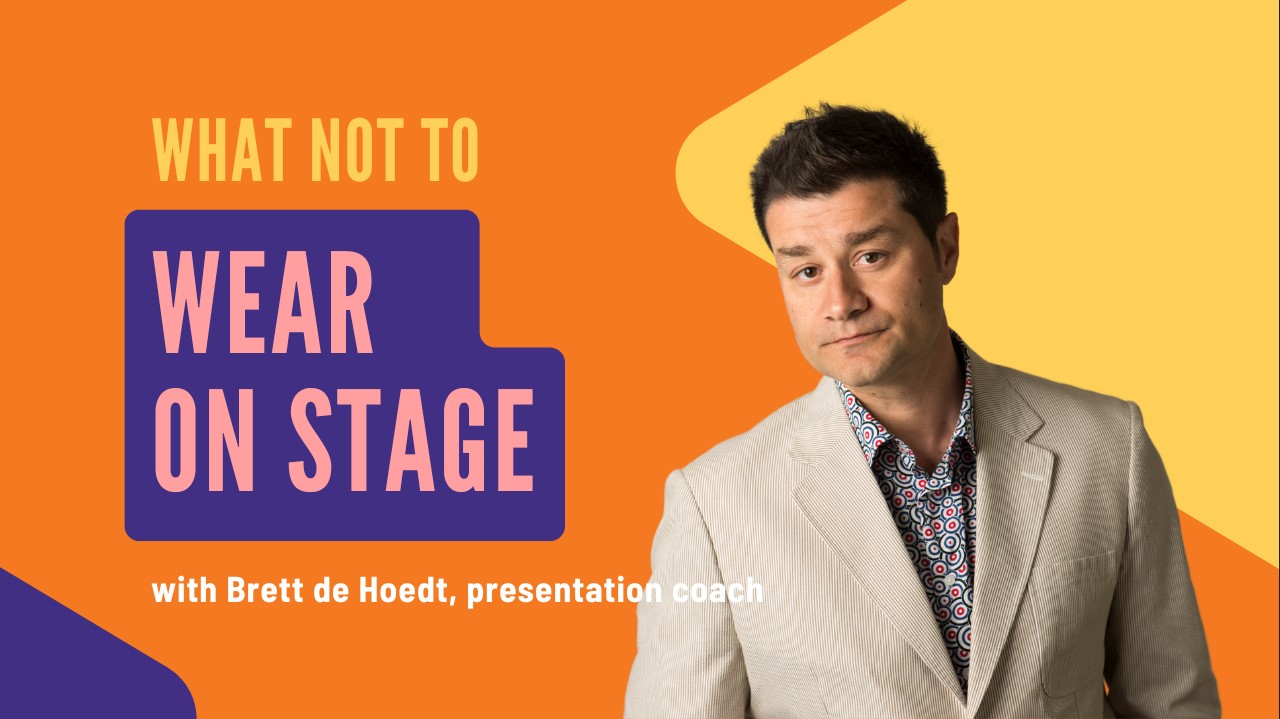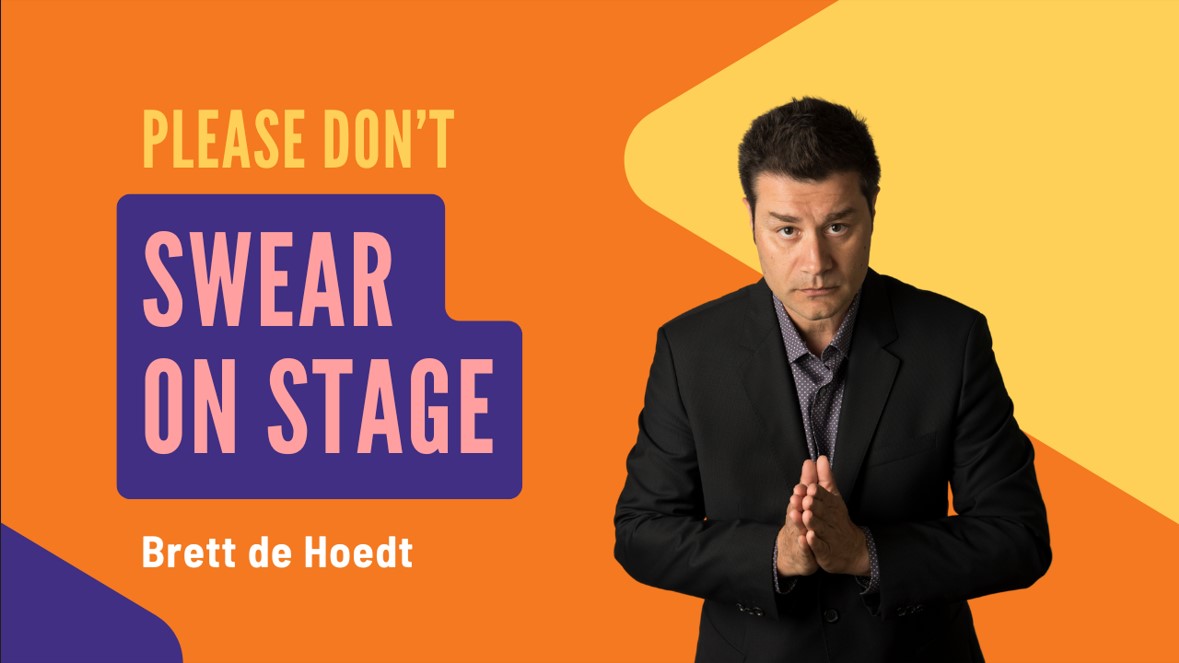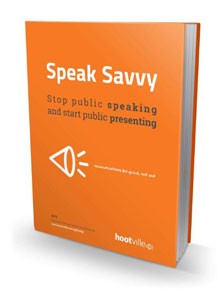
There’s a lot of public speaking advice out there (our new free eBook Speak Savvy for instance) and no wonder – many people loathe the thought of a quick presentation to workmates. A keynote presentation to 1000 peers is enough to render many mute and let’s not even mention speaking to media.
That’s a shame because presenters who are engaging, confident and knowledgeable are seen as smarter, better leaders and are more likely to get their way compared to people of equal experience and IQ who cannot command attention. That’s showbiz.
So what makes a “good public speaker” “good”? Well we took a cue from nutritionists who – like the Egyptians – created a pyramid long ago that still gets referred to today. Say hello to the public speaking pyramid.
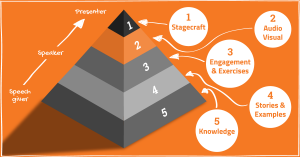
It all starts with knowledge. Note the lack of whole grains, dairy or legumes in this pyramid.
The good news is that being a strong speaker is all based on knowledge. Many speakers and speaker trainers tacitly believe that it’s possible to compensate for a lack of real knowledge and specific experience with some YouTube videos, a loud voice and a silly ice-breaking activity. It isn’t.
One of the best presentations Brett ever saw was delivered by a woman with no PowerPoint, no audience activities, no dramatic pauses and certainly no honed TED-style personal stories. She hadn’t taken our Present Savvy workshop.
The speaker was Debbie Kilroy and she spoke from the heart from her own personal experience about a topic that held 1000 people enthralled – women in prison. She didn’t even move from behind the lectern but her knowledge and expertise was so compelling, authentic and unique that she killed. (Showbiz talk for “excelled”.) Knowledge works – that’s why it’s the base of our public speaking pyramid. You need multiple servings of this.
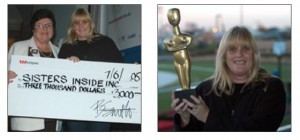
Deb with late great Joan Kirner, former Premier of Victoria.
Knowledge is more than facts – it’s what you and you alone can explain. It’s your experiences and perspectives. As we emphasise to our Present Savvy participants, if your content is compelling, robust and valuable nobody regrets the missing videos, dramatic pauses or audience participation. Nobody misses the entrance and exit music when the speaker is smart and helpful. So be smart and helpful.
Consider this range of response.
So how was the speaker today, dear?
Option A.
Super confident and he had all these cool graphics but I don’t know what makes him an expert in waste water treatment. We all knew as much as he did.
Option B
Yeah – pretty good. Not exactly a bundle of laughs but there was nothing about waste water the guy didn’t know. I learnt some stuff for sure.

Stories work for grown ups as well as they do for kids.
Your knowledge needs to be brought to life. It must be transferred; given colour and be made comprehensible. Great public speakers liberally pepper their stagetime with examples and stories which are selected to be both representative, memorable and moving.
Of all the content you deliver on stage, your stories and examples are most likely to stay with audiences after the show. Good speakers take time to find examples that hit home with audiences. Note – the stories don’t have to be about you. They needn’t be long – they might be more a personal reflection or reminiscence.
Do you use examples or stories? Do they illuminate? Have you practiced how you tell them? We guarantee every speaker we train that we can improve their stories and examples.
Why stories? Empathy is in short supply. Humans presume their own lives to be complex but others peoples’ situation to be simple. The right story or example will reveal nuance. It might drill down and highlight the moment something changed. Stories and examples, like this one from leading introvert Susan Cain might inject some humour or humanity. It should offer you a way to explain something beyond just straight talking. Stories help your messages sink in.
Consider this range of response.
How was that speaker at work today dear?
Option A
Not bad. Total expert in her field – nothing she didn’t know about recruiting staff but I don’t know exactly how any of it was particularly relevant to me.
Option B
Not bad. Total expert in her field – nothing she didn’t know about recruiting staff. She gave us this case study of a business that is a lot like us. The company went from employer of last resort to an employer of choice. There was definitely stuff I can use.

Doing sometimes beats talking.
Speakers and presenters have a message to get across. Otherwise why even bother? To get your message across you MUST engage the audience. Many public speakers are too meek to take control. Get over this self-imposed limitation. It can be as simple as a quick audience poll or as extravagant as having 1000 people form teams to build constructions out of pasta. (Dried not fresh.)
Audiences may claim to be tired of group exercises. Liars! Appropriate, well explained, well executed activities leave audiences enlivened. Exercises break up slabs of talk and allow people who have different learning styles to thrive. Engaging exercises showcase the speaker’s prowess as a presenter and elevate your contribution from speaking to presenting. Exercises make your contribution more memorable. No engagement = no attention. Note – the exercises must relate to your content and message somehow.
Consider this range of response.
“So how was the conference dear?”
Option A
Good. One speaker was talking about how hard it is to come to Australia as a refugee.
Option B
Good. One speaker was talking about how hard it is to come to Australia as a refugee. She did this thing where she handed out forms to enrol your kid in daycare, rent a home and apply for a mortgage but instead of being in English the forms were 50% in English and 50% in Arabic and asked us to complete the forms. Impossible.
Another example
“So how was the conference dear?”
Option A
We had this sales expert who talked about how important it was to have really great answers to frequently held objections from our customers.
Option B
We had this sales expert who talked about how important it was to have really great answers to frequently held objections from our customers. She had half the room come up with the objections and half the group come up with the responses. The responders had three minutes to come up with their answers and we voted on which group had the best responses. Honestly – the difference between some of the responses to the same objections was horrifying.
Audio / visual
The ante has been well and truly upped in this regard. There are some super slick videos and infographics out there being used to full effect by presenters. Undoubtedly they can be the icing on the cake but they are no substitute for knowledge, examples and stories and engagement.
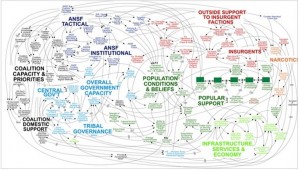
A picture is worth a thousand words. It should not contain 1000 words.
The use and abuse of PowerPoint is an old chestnut but like the weather everyone complains but nobody does anything about it. If you use it (and you do have a choice) use it lightly to illuminate, clarify and entertain. We have plenty of tips in our free PDF eBook: Speak Savvy.
If you depend on videos to bring home your point make them A) your own B) not utterly familiar C) relevant to your message D) short.
I place audio / visual at the top of the public speaking pyramid – it’s a bonus not a basic. Yet most presenters will spend far longer on their PowerPoint than refining their stories or devising an engaging audience exercise.
You stand more chance of moving someone with an exercise than a slide.
So how was that speech you went to?
Option A
Pretty good. She played that video of the gorilla and the basketballers. They all use that. Then she played some American TV ad to get some message across about collaboration. It a bloody commercial for a mobile phone – who cares?
Option B.
Pretty good. She showed this video from one of her workshops. She interviewed participants before and after about teamwork. She turned some absolute lone wolves into collaborators. Maybe she could do something with our team.
Stagecraft
The icing on the pyramid cake (pardon the mixed metaphor) is stagecraft. ‘Serious’ speakers – those who land big fat speaking fees – have made much of stagecraft including: pauses, mime, roaming, whispering, costume changes, props and chants.
If and only if you have
- knowledge,
- stories & examples,
- engagement & exercises,
- audio visual,
all sorted then and only then can some cunning stagecraft help lift you to the speaking stratosphere.
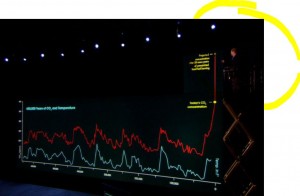
Ok – some gimmicks work pretty well. For former Vice Presidents.
I have seen (endured) speakers who come with sherpas laden with paraphrenalia. Home videos, props, role plays, songs and dances.
This is a trait of the non-expert who covers a lack of real experiences and smarts under an icing of showbiz. I am all for showbiz – but as the dessert, not the main course.
So how was the conference dear?
Option A
There was this sort of ‘motivational’ speaker woman – my God! She cried, she sang, she came out wearing this glittery ball gown. She talked about her childhood and her corporate career but I’m not sure how recent any of that was. Some of us were wondering afterward – what exactly was she here for?
Option B
There was this woman – my God! She was amazing. Quite theatrical – she showed us all these pictures of herself growing up around the world. She sang a little song but what I got out of it was that collaboration is built from four key shared values.
If that’s given you food for thought download the free PDF eBook Speak Savvy.
It’s full of ways to be a great presenter on stages small or large.
And find out what two of our training workshops can do for you. Speak Savvy is for those wanting to bask in the media spotlight. Present Savvy makes you a savvier presenter to audiences big or small, clients and stakeholders..
– Brett de Hoedt, Mayor of Hootville.

For anyone who speaks to other people as part of their work.

